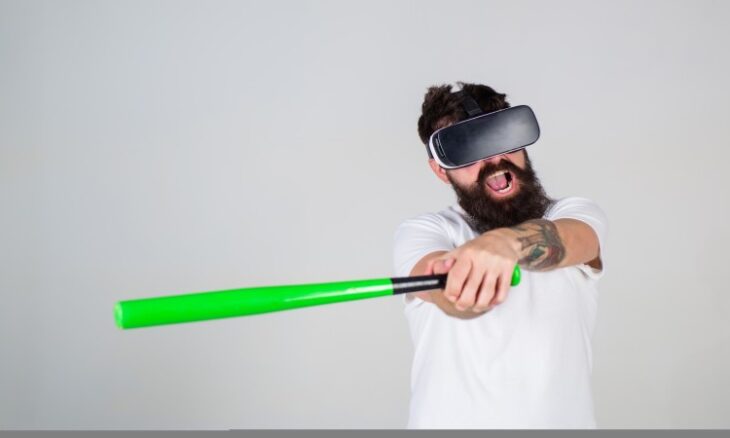VR Tech Revolutionises MLB Batting, But Nationals Miss Out
Approximately four hours before a home game early in the season, Washington Nationals outfielder Alex Call retrieved his white Oculus virtual reality headset from his locker and departed the clubhouse swiftly. Moments later, he found himself virtually positioned in the batter’s box at Denver’s Coors Field, facing Philadelphia Phillies right-hander Aaron Nola on the mound.
Call utilised the headset alongside the VR programme Win Reality to examine Nola’s pitching arsenal in advance. The system provided detailed analysis of release points, velocity, spin rates, and ball movement for each pitch from the pitcher’s hand to home plate. The virtual experience could simulate various scenarios, from random selections of Nola’s five-pitch repertoire to concentrated sequences of 25 fastballs down the middle or 10 sliders just beyond the strike zone.
Call explained that after observing 50 virtual pitches from a specific pitcher through the Oculus system, he gained comprehensive knowledge of release points and fastball characteristics, leaving him thoroughly prepared for any situation. The outfielder represents one of only five MLB players maintaining both a strikeout rate below 15 per cent and a chase rate under 20 per cent.
The programme costs $200 per season and provides access to every pitch from every pitcher in Major League Baseball. Call described this as a worthwhile investment, noting that typical everyday hitters encounter approximately 2,000 pitches during a regular season. In contrast, Call claimed to have observed over 54,000 pitches through the virtual system, equivalent to more than 25 seasons of real-game experience.
This extensive virtual exposure helps explain Call’s ability to execute quality at-bats, select appropriate pitches to swing at, and maintain favourable walk-to-strikeout ratios. These skills prove challenging to develop through conventional training methods, as players typically see only 15 pitches daily from different pitchers executing various difficult techniques.
Most Washington Nationals hitters have employed the VR programme for pitch recognition and plate discipline development. However, the Oculus system presents limitations regarding timing development, as players primarily observe pitches entering the strike zone without taking actual swings.
Advanced pitching machines like the Trajekt Arc address this timing deficiency. Similar to VR headsets, Trajekt Arc replicates opposing pitchers’ actual arsenals, but unlike virtual reality, it enables hitters to take genuine swings at real baseballs. The consensus suggests Trajekt Arc improves timing because baseballs emerge from a precisely positioned hole in a screen displaying video of the pitcher’s delivery, effectively simulating game conditions.
The Washington Nationals lack this technology, making them an outlier amongst MLB organisations. Trajekt Arc approaches widespread adoption across the majors. Whilst the company maintains confidentiality regarding specific team numbers, a spokesperson confirmed that over 70 machines operate across five professional leagues globally.
The Chicago Cubs and New York Yankees adopted the technology early, whilst teams with smaller budgets, including the Miami Marlins, Chicago White Sox, and Colorado Rockies, have recently acquired the machines. Research indicates 25 MLB teams currently utilise Trajekt Arc systems.
Trajekt Arc costs vary depending on team, league, and version, but typical commitments reach approximately $500,000, or roughly $15,000 monthly on three-year contracts. This compares to Washington’s $120 million player payroll for the current season. The Nationals declined to comment when questioned about their technology investment decisions.
Nearly every opponent on Washington’s schedule possesses Trajekt Arc systems in their home ballparks. Arizona rookie Tim Tawa, who began using the machine this season, reported that most Diamondbacks players employ it before pinch-hitting appearances. He considered it invaluable for recognising pitch shapes and understanding pitcher timing and delivery mechanics, aspects unavailable through VR technology.
Tawa emphasised that machine usage differs from facing actual pitchers. Real pitchers may alter arm slots daily or occasionally mislocate pitches, variations that virtual reality cannot replicate completely. Initially, he found Trajekt Arc unusual, and the visual differences from real pitchers discouraged some teammates from attempting it. Additionally, results achieved off the Arc don’t precisely correlate with actual game performance.
Despite limitations, Tawa described the system as providing realistic preparation that makes players feel ready for immediate game entry. Several Nationals players, speaking anonymously to express honest opinions, indicated they would welcome team investment in Trajekt Arc technology. One player recalled using an earlier machine version years ago, finding it superior to traditional pitching machines for timing and pitch recognition.
The Nationals employ Hack Attack pitching machines, which have operated at all affiliate levels since 2023. These machines produce near-replicas of pitches teams will encounter on specific days but lack visual pitcher displays, making them less realistic timing tools than Trajekt Arc.
Washington has maintained roughly average MLB offensive production without Trajekt Arc, despite experiencing difficulties in June. However, the machine’s widespread adoption throughout baseball indicates other organisations recognise its value despite the relatively high cost.
Currently, virtual reality remains the Nationals’ primary plate discipline training tool. Call noted his strikeout rate decreased by half after beginning VR usage. Other roster members show mixed reactions, with some seeking competitive advantages whilst others prefer maintaining established routines that secured their major league positions.
Most position players have experimented with the technology. Jacob Young embraced it enthusiastically, James Wood expressed approval, whilst Nathaniel Lowe remained sceptical. CJ Abrams used it during spring training but primarily relied on video analysis during the regular season.
Abrams described feeling disoriented upon removing the headset, comparing it to snapping back into reality, though he acknowledged the technology’s impressive qualities. Wood praised its realism, suggesting it provides the closest approximation to facing live pitching available to players.
Lowe dismissed the system as resembling a video game, expressing indifference towards teammates who believe in its effectiveness whilst maintaining his personal scepticism. Call, however, anticipates broader adoption, predicting universal headset usage throughout baseball in the future.
The technology gap highlights the evolving landscape of baseball training, where teams increasingly rely on sophisticated tools to gain competitive advantages. As virtual reality and advanced pitching machines become standard equipment, organisations like Washington face decisions about embracing these innovations or maintaining traditional training methods.










